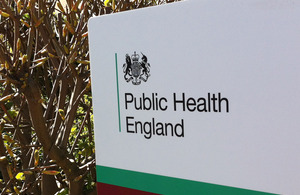PHE launches new resource to tackle tuberculosis in under-served populations
The guidance will help TB Control Boards and local health partners to deliver their programmes to hard to reach communities.

Tuberculosis (TB) is a disease still associated with social deprivation. In 2015, rates of TB among people living in the most deprived areas of England were nearly 6 times as high as those living in wealthier areas, with a clear trend of an increasing rate of TB with increasing deprivation. Read TB Annual Report 2016.
Among people living in communities with high rates of TB are those with multiple complex health and social care needs. For many such people, services as currently constructed and delivered simply do not reach them. They therefore often miss the opportunity for early diagnosis of TB, may miss out on treatment and so suffer avoidable health consequences themselves as well as potentially spreading infection to others. These people are described as under-served populations (USPs).
Tackling TB among USPs is one of the key areas for action identified in the Collaborative TB Strategy for England.
Public Health England (PHE), working in partnership with TB Alert and NHS England, have published a new resource for TB Control Boards and their partners for tackling TB among USPs. The work specifically considers the needs of:
- people who are homeless
- those who misuse drugs and/or alcohol
- people in contact with the criminal justice system
- some migrant populations at higher risk of TB (including refugees, asylum seekers and those in immigration detention)
- some people living with mental health problems
Many people at risk of TB will belong to more than one of these categories.
The purpose of the resource is to improve our understanding of the health needs of USPs in relation to TB and to support the design and delivery of multi-agency programmes and services to better meet those needs. This resource provides TB Control Boards and their partners with a framework around which to build collaborative programmes of work to reduce the burden of TB among USPs in their area. The resource offers practical examples of successful initiatives which have been implemented to reach these communities. This will not only improve the health of these populations but will protect the health of the wider population and contribute significantly to the aims of the Collaborative TB Strategy for England.
Mike Mandelbaum, Chief Executive of TB Alert said:
Tuberculosis disproportionately affects some of the most vulnerable people in society, who often have least access to healthcare. This is as true in England as in developing countries, which explains the need for services which respond to the specific challenges involved in tackling TB among under-served populations.
The key to improved health outcomes among these populations is partnership working involving health services, local authorities, the third sector, and affected populations themselves. This resource provides a framework for commissioning and delivering services based on those partnerships, and for reversing the pattern of health inequalities so commonly associated with TB.
Dr Éamonn O’Moore, National Lead for Health and Justice at PHE said:
Tackling TB in under-served populations is about addressing health inequalities and protecting the health of the most vulnerable in our communities as well as benefitting the whole population through reducing the burden of TB in England. PHE have recognised that TB Control Boards and their partners must work collaboratively and in new ways to reach out to vulnerable and marginalised people to improve diagnosis and successful treatment.
This requires work across health and social care organisations but also with people and communities affected by TB and living with multiple complex needs. Our partnership with TB Alert recognises the value of working with vulnerable patients and their advocates to design and deliver services more appropriately and effectively to the benefit of all.